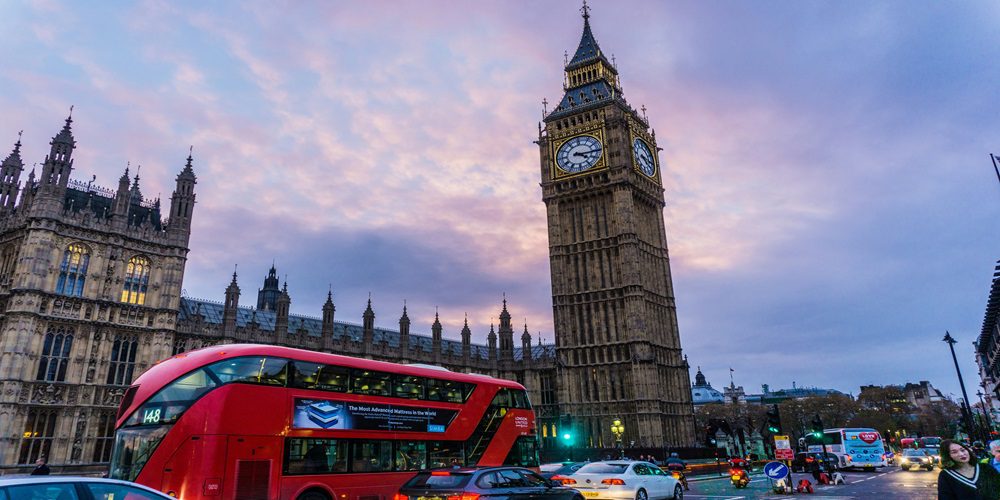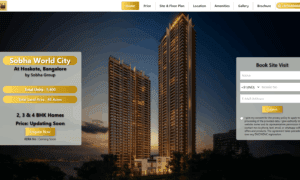Welcome to the ultimate guide to the biggest city in Europe! Get ready to explore a bustling metropolis filled with history, culture, and endless possibilities. From iconic landmarks to hidden gems, we’ll take you on a journey through this vibrant city like never before. Whether you’re a first-time visitor or a seasoned traveler, there’s something for everyone in this European gem.
Introduction to Europe and its biggest city
Europe is a continent that is steeped in history, culture, and diversity. It is home to 44 countries and over 740 million people, making it the second most populated continent in the world. From its stunning architecture to its rich cuisine, Europe has something for everyone. And at the heart of this beautiful continent lies its biggest city, London.
London is not only the capital of England, but also one of the largest cities in Europe. With a population of over 9 million people, it is a bustling metropolis that attracts millions of tourists every year. The city’s history dates back over two thousand years, when it was founded as a Roman settlement on the banks of the River Thames.
One of the most striking features of London is its unique blend of old and new architecture. As you wander through its streets, you will come across iconic landmarks such as Buckingham Palace, Westminster Abbey, and Big Ben, which are remnants of its glorious past. At the same time, you will also find modern skyscrapers like the Shard and the Gherkin dotting the skyline.
Apart from its architectural wonders, London is also renowned for its vibrant art scene. It boasts some of the best museums in the world, like the British Museum and the National Gallery, which house priceless artifacts and masterpieces from different eras. For those interested in contemporary art, there are numerous galleries like Tate Modern and Saatchi Gallery showcasing works from both established and emerging artists.
The history of the biggest city in Europe
The biggest city in Europe, also known as the “Queen of the Danube,” is none other than Budapest. Located in Hungary, this historic city has a rich and diverse history that spans over 2,000 years.
Budapest was originally founded as two separate cities: Buda on the western bank of the Danube River and Pest on the eastern bank. Buda was established by Celtic tribes in the 1st century BC, while Pest was founded by Romans in the 1st century AD. Throughout its early history, Budapest was ruled by various empires, including the Roman Empire, the Ottoman Empire, and the Austro-Hungarian Empire.
In 1873, Buda and Pest were officially united to form one city: Budapest. This marked a significant turning point for the city, as it experienced rapid growth and modernization. Under Austrian rule during this time, Budapest became a major industrial center with advancements in transportation and infrastructure.
During World War II, Budapest suffered heavy damage from bombings, which destroyed many historical buildings and landmarks. However, after the war ended and Hungary regained its independence from Austria, reconstruction efforts began to restore Budapest to its former glory.
One of the most infamous events in Budapest’s history took place during the Hungarian Revolution of 1956, when citizens rose up against Soviet rule. The revolution lasted for two weeks before being brutally crushed by Soviet forces. This event left a lasting impact on Budapest’s political landscape.
The top attractions and landmarks in the city
As the largest city in Europe, this bustling metropolis is known for its vibrant culture, rich history, and impressive architecture. It’s no wonder that there are countless attractions and landmarks to see in this diverse and dynamic city. From ancient ruins to modern art, here are some of the top attractions and landmarks you won’t want to miss during your visit.
1. The Colosseum: This iconic structure is a must-see for anyone visiting the city. Built over 2,000 years ago, it was once used as an arena for gladiator fights and other forms of entertainment. Today, it stands as a symbol of Rome’s ancient past and is one of the most visited landmarks in the world.
2. Trevi Fountain: Another famous landmark in Rome is the Trevi Fountain. Known for its stunning Baroque design and intricate sculptures, this fountain attracts millions of visitors each year who toss coins into its waters, according to legend, for good luck and a return trip to Rome.
3. Vatican City: Located within Rome itself, Vatican City is home to some of the most important religious sites in Catholicism, including St. Peter’s Basilica and the Sistine Chapel, which features Michelangelo’s famous ceiling frescoes.
4. Eiffel Tower: No visit to Paris would be complete without seeing the iconic Eiffel Tower. This tall wrought iron tower has become synonymous with Parisian culture and offers breathtaking views of the city from its observation decks.
5. Louvre Museum: Art lovers will not want to miss a chance to explore one of the world’s largest museums located in Paris. The Louvre Museum boasts an impressive collection that includes masterpieces like Leonardo da Vinci’s Mona Lisa.
Cultural aspects and diversity of the city
Cultural aspects and diversity are an integral part of the city’s identity and history. As the biggest city in Europe, it is no surprise that it is home to a melting pot of different cultures, traditions, and people from all over the world.
The city’s cultural landscape can be traced back centuries, when it was a major hub for trade and commerce. This brought in merchants, traders, and travelers from different parts of Europe, Asia, Africa, and beyond. With them came their unique customs, beliefs, languages, and cuisines, which have left a lasting impact on the city’s culture.
Today, the city remains a diverse metropolis, with its residents hailing from various ethnicities and backgrounds. This has created a vibrant blend of cultures that can be seen in every aspect of daily life, from food to fashion to entertainment.
One key aspect of the city’s cultural diversity is its cuisine. You can find restaurants serving authentic dishes from almost every corner of the globe: Italian pizza joints next to Chinese noodle houses; Indian curry shops alongside Mexican taquerias; French brasseries next to Greek tavernas. The options are endless! It truly reflects how diverse this city is when it comes to culinary experiences.
Food and cuisine in the biggest city in Europe
Food and cuisine are an integral part of any city’s culture, and the biggest city in Europe is no exception. With a diverse population and a rich history, this city boasts an eclectic mix of traditional and modern flavors that will leave your taste buds wanting more.
One cannot talk about food in the biggest city in Europe without mentioning its vibrant street food scene. From savory kebabs to mouth-watering crepes, the streets are lined with vendors selling delicious treats at affordable prices. The most famous street food here is perhaps the doner kebab, a Turkish dish consisting of succulent meat cooked on a vertical rotisserie and served with fresh vegetables, sauces, and bread. It’s so popular that you can find it almost everywhere you go.
For those looking for a sit-down dining experience, this city has plenty to offer as well. Its multicultural population has resulted in a diverse culinary landscape that caters to all tastes and preferences. You can find everything from authentic Italian trattorias to trendy fusion restaurants serving up dishes from around the world.
No visit to this city would be complete without trying some traditional dishes that have been passed down through generations. One such dish is borscht, a hearty soup made with beets, cabbage, potatoes, and sour cream. It may not sound appealing at first, but one spoonful will transport you back in time as you savor the flavors of this classic Eastern European dish.
If you’re feeling adventurous, why not try some local delicacies like herring under a fur coat or shuba? These dishes may have unusual names but are simply layers of pickled herring covered with grated boiled vegetables and topped with mayo or sour cream—definitely worth giving a try!
For those with a sweet tooth, this city has got you covered as well. Indulge in some mouth-watering pastries like medovik (honey cake) or vatrushka (sweet cheese pie) at one of the many charming cafes scattered throughout the city. And don’t forget to try some traditional desserts like blini (thin pancakes) or syrniki (cottage cheese fritters) for a true taste of this city’s cuisine.
Transportation and getting around the city
Transportation and getting around the city are crucial aspects to consider when visiting a bustling metropolis like the biggest city in Europe. With over 13 million people residing in this vibrant city, it is important to know the best ways to navigate through its streets and reach your desired destinations efficiently.
One of the most popular modes of transportation in this city is the extensive metro system. With over 200 stations, it covers almost all areas of the city and is considered one of the fastest and most convenient ways to get around. The metro runs from 6 a.m. to midnight on weekdays and stays open for an extra hour on weekends. You can purchase single tickets or opt for a rechargeable travel card called the “Oyster Card,” which offers discounted fares for frequent travelers.
Another efficient way to explore the city is by using buses. The bus network connects various areas not covered by the metro, making it a great option for reaching specific locations. However, due to heavy traffic during peak hours, buses may take longer than expected, so it’s advisable to plan your journey accordingly.
For those who prefer above-ground transportation with scenic views, taking a ride on one of London’s iconic double-decker red buses is a must-do experience. These buses operate throughout the day and night and offer hop-on, hop-off services that allow you to explore different parts of the city at your own pace.
Tips for travelers visiting the biggest city in Europe
The biggest city in Europe, also known as the “City of Lights” and “the city that never sleeps,” is a must-visit destination for any traveler. With its rich history, iconic landmarks, and vibrant culture, there’s no shortage of things to see and do in this bustling metropolis. However, navigating such a large and diverse city can be overwhelming for first-time visitors. That’s why we’ve compiled a list of essential tips to help you make the most of your trip.
1. Plan your itinerary wisely.
With so many attractions and neighborhoods to explore, it’s important to plan your itinerary carefully. Consider what you want to see and do the most, and group them together geographically to save time on transportation. It’s also helpful to research opening hours and ticket prices in advance to avoid disappointment.
2. Use public transportation.
The biggest city in Europe has an extensive public transportation system that includes buses, trains, and the famous metro system, affectionately known as the “Metro.” Not only is it efficient and affordable, but it can also save you from getting lost while exploring the city on foot.
3. Book tickets online.
If you want to visit popular tourist spots like the Eiffel Tower or the Palace of Versailles, consider booking tickets online beforehand. This will save you from waiting in long lines at the ticket office and give you more time to enjoy these iconic sites.
4. Try local cuisine.
One of the best ways to experience a new place is through its food! The biggest city in Europe is renowned for its gastronomic delights, from delicious pastries like croissants and macarons to savory dishes like escargots (snails) or coq au vin (chicken cooked with wine). Don’t be afraid to try something new!
5. Dress appropriately.
Parisians are known for their impeccable fashion sense, so if you want to blend in with the locals, dress stylishly but comfortably. It’s also important to pack appropriate clothing for the season, as the weather can be unpredictable.
6. Take a walking tour.
Walking tours are a great way to explore the city and learn about its history from knowledgeable guides. There are several free walking tours available, or you can opt for a paid tour that covers specific neighborhoods or themes.
7. Be mindful of scams.
Like any major tourist destination, the biggest city in Europe has its fair share of scams targeting unsuspecting travelers. Be cautious of people asking for money or offering unsolicited help, especially around popular tourist areas.
8. Learn basic French phrases.
While many Parisians speak English, learning a few basic French phrases such as “bonjour” (hello) and “merci” (thank you) can go a long way in showing respect and building connections with locals.
Comparison to other major cities in Europe
Europe is home to some of the biggest and most iconic cities in the world, each with its own unique charm and character. In this section, we will take a closer look at how our ultimate city compares to other major cities in Europe.
Firstly, in terms of size and population, our ultimate city stands out as one of the largest in Europe. With a land area of over 1,500 square kilometers and a population of more than 8 million people, it is second only to Moscow in terms of physical size and population. This makes it a bustling metropolis that offers endless opportunities for both locals and tourists alike.
When it comes to cultural diversity and history, our ultimate city also shines among its European counterparts. As one of the oldest cities in Europe, it boasts a rich past that dates back over two millennia. From Roman ruins to medieval architecture and modern skyscrapers, this city has it all. Additionally, its diverse population adds another layer to its cultural heritage, with influences from various cultures such as Greek, Italian, Turkish, and many others.
In terms of transportation infrastructure, our ultimate city is ahead of many other European cities. It has an extensive public transportation network consisting of buses, trams, metro lines, ferries, and even cable cars. This makes getting around the city quick and convenient for both locals and visitors. Furthermore, the well-connected airport allows for easy access from different parts of the world.
Moving on to the food scene—another important aspect when comparing cities—our ultimate city definitely holds its own against other major European cities known for their gastronomy. From traditional street food markets serving up flavorful local dishes to high-end Michelin-starred restaurants offering fine dining experiences, there is something for every tastebud here.
Conclusion:
After reading through this ultimate guide to the biggest city in Europe, it is clear that there are countless reasons why you should visit this incredible destination. From its rich history and culture to its modern and vibrant atmosphere, there is something for everyone in this bustling metropolis.



































